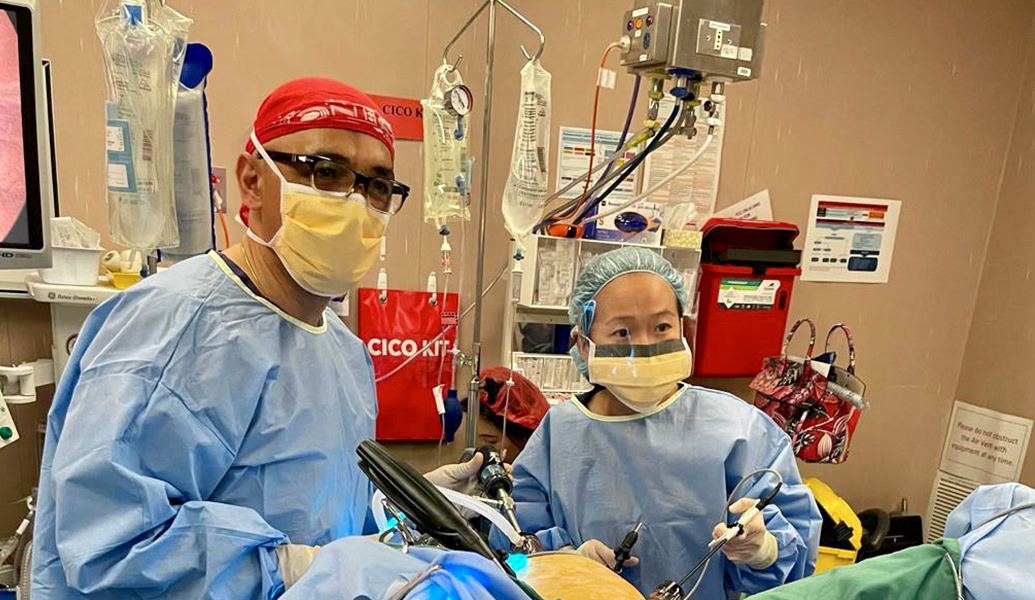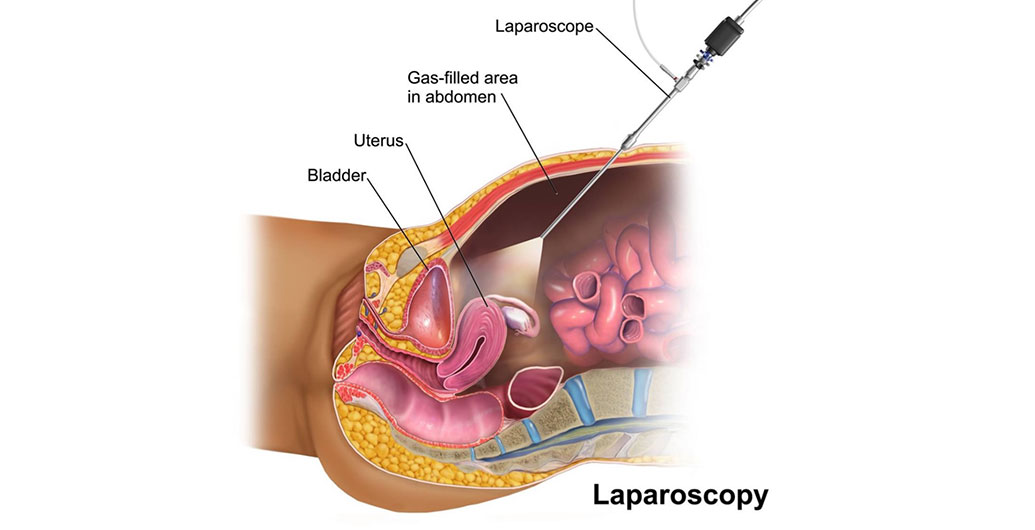
Laparoscopy (Key Hole Surgery/Minimally Invasive Surgery)

Laparoscopy, often referred to as minimally invasive surgery, is a cutting-edge surgical procedure that employs a specialised instrument called a laparoscope. This telescope-like surgical instrutment functions like a tiny camera, allowing surgeons to look inside the body and perform various procedures with minimal incisions.
Avantages of Laparoscopic Surgery:
When compared with traditional surgery, laparoscopic surgery offers several key benefits:
- Reduced pain following the procedure
- Lower risk of complications
- A shorter hospital stay and a quicker recovery
- Minimal scarring
- Less internal scarring – making any future surgeries safer
Understanding what laparoscopic surgery is
A laparoscope is a thin telescope with a light source, illuminating and magnifying abdonomial structures. It is passed into the abdomen through a small incision, typically less than 1 cm in size. Besides looking inside, surgeons can use a fine instrument to operate and these are passed into the tummy through another small cut in the skiny, generally 0.5 cm in size. These instruments are used to cut or trim tissues, take biopsies etc, inside the abdomen.
Diagnostic laparoscopies are used to identify a cause for your symptoms and plan treatment. The operation will help to identify if you have any of the following conditions:
- Endometriosis (cells lining of the womb are found elsewhere in the body)
- Pelvic infection
- Scar tissue, for example from previous surgery
- Damaged fallopian tubes
- Ovarian cysts
If minor problems are found such as small areas of endometriosis or minor scar tissue, these can be treated during your operation. If more complex problems are found, then they may need to be treated with another operation on another day.
Who can perform a laparoscopy?
Specially trained doctors can perform almost all gynaecological surgeries by laparoscopic route. At Create Health, our doctors are highly trained in advanced and complex minimally invasive surgeries and perform a large volume of cases.
These include:
- hysterectomy
- removal of fibroids
- removal of cysts
- treatment of endometriosis
- treatment of prolapse
How is a laparoscopy performed?
Laparoscopy is performed under a general anaesthetic in the operating theatre. Instruments may be inserted into the vagina or rectum to assist in the procedure. A small cut is made in your belly button. The abdomen is inflated with gas and a laparoscope is inserted to look at the internal organs. Further small cuts may be made in your abdomen if any abnormalities require treatment. After the procedure, the instruments are removed, the gas released and the cuts are then closed, with skin glue or with dissolving stitches.

What are the risks of laparoscopic surgery?
As with all surgery, it is important to assess the benefits and risks before undertaking laparoscopic surgery.
There are some specific risks to be aware of in relation to this operation:
- The procedure may not be able to be completed laparoscopically, and you may require a laparotomy (an open operation with a larger cut) and an increased hospital stay.
- Deep bleeding may occur inside the abdomen. This may need fluid replacement, blood transfusion or further surgery. It may also mean a longer stay in hospital and a longer recovery time.
- Damage to other organs, such as bladder or bowel, which may need further surgery. This may mean a longer stay in hospital and a longer recovery time.
- In rare cases the gas, which is passed into the abdomen, causes heart and chest complications.
- Adhesions (bands of scar tissue) may form, usually only after major or multiple surgeries, and cause a bowel obstruction. This can be a short or long-term complication and may need further surgery.
- There is a possibility this procedure may not find the reason for the symptoms you have been experiencing.
There are some general risks inherent to all operations:
- Small areas of the lungs may collapse, increasing the risk of chest infection. This may need antibiotics and physiotherapy.
- Clots may form in the legs leading to pain and swelling. In rare cases part of this clot may break off and go to the lungs which can be fatal.
- You may suffer a heart attack or stroke because of strain on the heart.
- Death is an extremely rare possibility for anyone undergoing an operation.
Some women are at an increased risk of complications:
- Women who are very overweight have an increased risk of wound infection, chest infection, heart and lung complications and blood clots.
- Smokers have an increased risk of wound and chest infections, heart and lung complications and blood clots.
References:
https://ranzcog.edu.au/wp-content/uploads/Laparoscopy.pdf
https://www.betterhealth.vic.gov.au/health/conditionsandtreatments/laparoscopy
https://www.nhs.uk/conditions/laparoscopy/
« back


 (03) 9873 6767
(03) 9873 6767  By Dr Sugandha Kumar - Obstetrician and Gynaecologist
By Dr Sugandha Kumar - Obstetrician and Gynaecologist